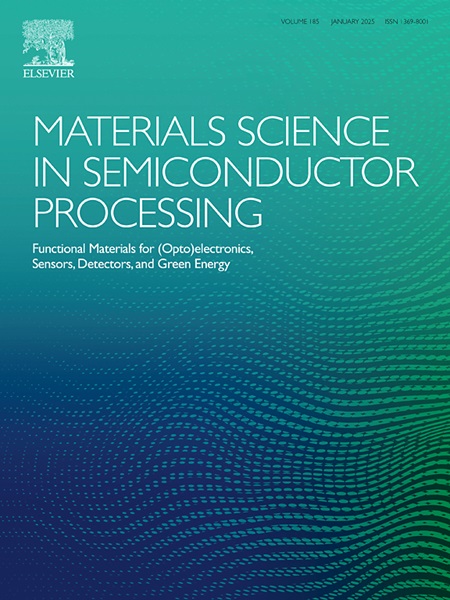Study of wet etching on long-wavelength InAs/GaSb Type-II superlattices
IF 4.2
3区 工程技术
Q2 ENGINEERING, ELECTRICAL & ELECTRONIC
引用次数: 0
Abstract
In the specialized arena of long-wave infrared (LWIR) detectors, the InAs/GaSb type-II superlattice (T2SL) has risen in prominence, capturing the keen interest of researchers and engineers. This is primarily because of its unique set of superior properties that contribute to its effectiveness in sensing and detecting long-wave infrared radiation. The current study delves into the realm of wet chemical etching for fast and cost-effective InAs/GaSb type-II superlattice LWIR detectors. The procedure involved a meticulous and systematic variation of the concentrations of key chemicals like citric acid, hydrogen peroxide, and phosphoric acid. The aim of this study was to perform single-variable experiments to elucidate the influence of different component ratios on the etching rate, surface roughness, device sidewall morphology, and the characteristics of surface deposits in etched long-wave nBn structure device. To visually capture the changes in the mesa's sidewall morphology, scanning electron microscopy (SEM) was employed. Energy dispersive spectroscopy (EDS) and X-ray photoelectron spectroscopy (XPS) were utilized to analyze the reaction products on the sidewall and surface. The results from these experiments were compelling. They revealed that when the ratio of H2O2 to H3PO4 was 1: 1, the surface roughness of the devices after etching was approximately 10 nm, which is considered ideal. Moreover, the sidewall etch angle in this condition approached nearly 70°, suggesting a well-defined etching pattern. An interesting phenomenon is that when the same H2O2: H3PO4 = 1:1, most of the insoluble Sb2O3 deposits can be dissolved with citric acid well. This process resulted in a relatively ideal mesa morphology, meaning the mesa structures were clean and well-defined, which is crucial for efficient detection.
求助全文
约1分钟内获得全文
求助全文
来源期刊

Materials Science in Semiconductor Processing
工程技术-材料科学:综合
CiteScore
8.00
自引率
4.90%
发文量
780
审稿时长
42 days
期刊介绍:
Materials Science in Semiconductor Processing provides a unique forum for the discussion of novel processing, applications and theoretical studies of functional materials and devices for (opto)electronics, sensors, detectors, biotechnology and green energy.
Each issue will aim to provide a snapshot of current insights, new achievements, breakthroughs and future trends in such diverse fields as microelectronics, energy conversion and storage, communications, biotechnology, (photo)catalysis, nano- and thin-film technology, hybrid and composite materials, chemical processing, vapor-phase deposition, device fabrication, and modelling, which are the backbone of advanced semiconductor processing and applications.
Coverage will include: advanced lithography for submicron devices; etching and related topics; ion implantation; damage evolution and related issues; plasma and thermal CVD; rapid thermal processing; advanced metallization and interconnect schemes; thin dielectric layers, oxidation; sol-gel processing; chemical bath and (electro)chemical deposition; compound semiconductor processing; new non-oxide materials and their applications; (macro)molecular and hybrid materials; molecular dynamics, ab-initio methods, Monte Carlo, etc.; new materials and processes for discrete and integrated circuits; magnetic materials and spintronics; heterostructures and quantum devices; engineering of the electrical and optical properties of semiconductors; crystal growth mechanisms; reliability, defect density, intrinsic impurities and defects.
 求助内容:
求助内容: 应助结果提醒方式:
应助结果提醒方式:


